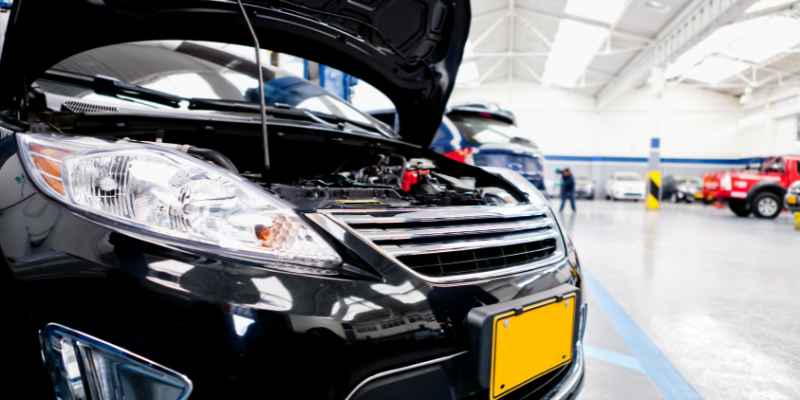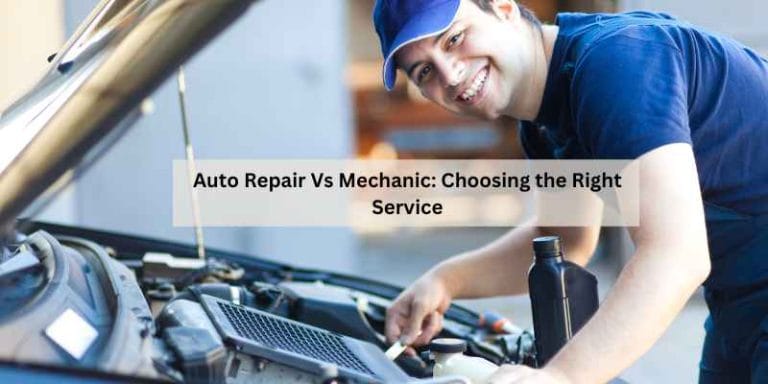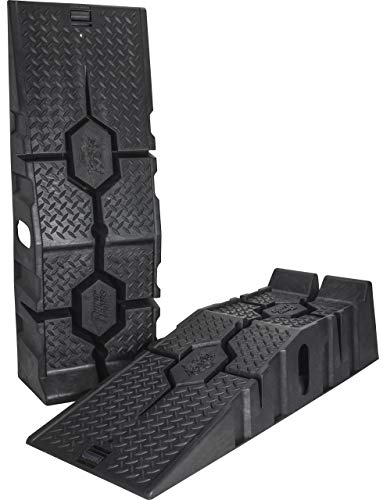Auto Repair Tips And Tricks: Quick Fixes for Your Car!
For auto repair tips and tricks, watch informative YouTube channels like How to Automotive and Car Wizard. These channels provide valuable insights on various car repair hacks that can save you both time and money.
By learning from experts in the field, you can enhance your car repair skills and tackle common issues effectively. Whether it’s removing stuck rotors, diagnosing engine problems, or troubleshooting power windows, these channels cover a wide range of topics to help you become proficient in fixing your car.
Additionally, engaging with car enthusiasts, visiting auto parts stores, and picking up a car manual are other effective ways to improve your automotive knowledge and skills. So, start exploring these resources today to become more adept at maintaining and repairing your vehicle.
Quick Diagnostics You Can Do At Home
Using A Code Reader
One of the quickest ways to diagnose issues with your car is by using a code reader. These devices can provide valuable information about potential problems with your vehicle’s engine.
Checking Fluid Levels
Regularly checking your car’s fluid levels is essential for maintaining optimal performance. Make sure to inspect the oil, coolant, brake fluid, and transmission fluid levels to ensure everything is at the appropriate level.
Simple Fixes For Common Issues
Replacing Wiper Blades
Worn wiper blades can hinder visibility, risking safety. Follow these steps to replace them:
- Lift wiper arm away from the windshield.
- Press the release tab to remove the old blade.
- Attach the new blade by following the instructions.
- Gently lower the arm back onto the windshield.
Changing Air Filters
Dirty air filters reduce engine performance. Here’s how to change them:
- Locate the air filter housing under the hood.
- Open the housing and remove the old filter.
- Insert the new filter according to the airflow direction.
- Close the housing securely.
Emergency Car Hacks
When you’re on the road, emergencies can happen at any time. It’s essential to be prepared to handle common car issues with quick and effective solutions. These emergency car hacks can save you time and money, and get you back on the road with minimal hassle.
Temporary Solutions For A Flat Tire
Dealing with a flat tire can be a major inconvenience, but there are temporary solutions that can help you get to the nearest repair shop. Here are some quick fixes:
- Tire Inflation Kit: Keep a portable tire inflation kit in your car to quickly inflate a flat tire and drive to a safe location for a more permanent repair.
- Use of Spare Tire: If you have a spare tire, replace the flat tire with the spare as a temporary solution until you can get the flat tire repaired or replaced.
- Temporary Patch: A tire plug or patch kit can provide a temporary fix for small punctures, allowing you to drive to a repair shop.
Dealing With A Dead Battery
A dead battery can leave you stranded, but there are some hacks to get you going again:
- Jump Start: Keep jumper cables in your car to jump-start your battery using another vehicle’s battery.
- Battery Charger: Consider carrying a portable battery charger to revive a dead battery without the need for another vehicle.
- Battery Terminal Cleaning: Corrosion on battery terminals can prevent a good connection. Use a simple solution of baking soda and water to clean the terminals and restore conductivity.
DIY Car Maintenance Essentials
Discover essential DIY car maintenance tips for effective auto repair. Learn tricks for fixing common issues efficiently. Master car care with these helpful insights.
Routine Oil Change Procedure
Changing your car’s oil is a crucial maintenance task that ensures the engine runs smoothly. To perform a routine oil change, follow these steps:
- First, gather the necessary supplies: new oil, an oil filter, a wrench, a drain pan, and a funnel.
- Next, locate the oil drain plug underneath the car and place the drain pan beneath it.
- Unscrew the drain plug using the wrench, allowing the old oil to drain into the pan.
- Once the oil has drained completely, remove the old filter and replace it with the new one.
- Then, reinstall the drain plug and use the funnel to pour in the new oil to the recommended level.
- Finally, start the engine and check for any leaks.
Brake Pad Replacement Basics
Replacing brake pads is essential for maintaining optimal braking performance. Follow these basic steps to replace your car’s brake pads:
- Begin by lifting the car with a jack and removing the wheels to access the brake calipers.
- Loosen the caliper bolts and carefully remove the caliper to access the old brake pads.
- Take out the old brake pads and use a C-clamp to compress the caliper piston.
- Install the new brake pads, ensuring they are securely in place, and then reattach the caliper.
- After reassembling the caliper and wheels, test the brakes to ensure they are functioning properly.
Performing routine oil changes and brake pad replacements can help extend the lifespan of your vehicle and ensure your safety on the road.
Tools Every Car Owner Should Have
When it comes to car ownership, having the right tools can make a significant difference in dealing with basic repairs and maintenance. By having the essential tools at hand, car owners can save time and money by handling simple tasks themselves.
Must-have Tools For Basic Repairs
Every car owner should have a basic set of tools to handle common repairs and maintenance tasks. These tools include:
- Screwdrivers: Both flathead and Phillips screwdrivers are essential for various tasks such as removing panels and tightening screws.
- Socket Set: A set of sockets and ratchets in different sizes can help with tasks like changing spark plugs and removing nuts and bolts.
- Pliers: Useful for gripping, bending, and cutting, pliers are versatile tools that come in handy for multiple repair jobs.
- Wrenches: Having a combination wrench set can assist in loosening or tightening nuts and bolts of different sizes.
- Jumper Cables: Essential for jump-starting a vehicle in case of a dead battery.
Organizing Your Auto Repair Kit
Keeping your auto repair tools organized is crucial for efficiency and ease of access. Consider using a toolbox or a tool bag with compartments to keep your tools sorted and easily accessible. Labeling compartments or using foam inserts can help you quickly identify and locate the right tool for the job.
Cosmetic Fixes Made Simple
Removing Scratches From Paint
If you’re tired of seeing those unsightly scratches on your car’s paint job, don’t fret. You can easily remove minor scratches using some simple household items. Start by washing the scratched area thoroughly and then apply a small amount of toothpaste to a clean microfiber cloth. Gently rub the toothpaste into the scratch in a circular motion. Rinse the area with water and dry it with another clean cloth. The scratches should be significantly less noticeable, if not completely gone.
Fixing Minor Dents
Minor dents can be a real eyesore, but the good news is that they can often be fixed without professional help. One method is the hot glue and plunger technique, which involves applying hot glue to the center of a plunger and then pressing it firmly onto the dent. Once it’s attached, pull the plunger away from the car with force to pop out the dent. For smaller dents, you can also try using a hair dryer and compressed air. Heat the dent with the hair dryer and then spray it with the compressed air upside down. The rapid cooling can sometimes cause the dent to pop out.
Preventative Measures To Avoid Costly Repairs
To avoid costly repairs, implement preventive measures like regular maintenance checks, timely oil changes, and monitoring fluid levels. Keep an eye on warning signs to address issues promptly, preventing major auto repair expenses down the road. Proper care and attention can save you money in the long term.
Regular inspection and maintenance are key to avoiding costly auto repairs. By taking proactive measures and following a routine maintenance schedule, you can prevent major issues before they escalate. One of the most effective ways to keep your vehicle in top condition is to conduct regular inspections and address any potential problems promptly.
Regular Inspection Checkpoints
Regularly checking key components of your vehicle can help you catch minor issues before they turn into major repairs. Some important inspection checkpoints include:
- Checking fluid levels such as oil, coolant, and brake fluid
- Inspecting tires for wear and proper inflation
- Examining belts and hoses for signs of wear or damage
- Testing the battery and charging system
- Inspecting the brakes for wear and proper function
The Importance Of Tire Maintenance
Proper tire maintenance is crucial for both safety and vehicle performance. Here are some tire care tips to help you avoid costly repairs:
- Regularly check tire pressure and inflate as needed
- Rotate tires according to the manufacturer’s recommendations
- Inspect tires for signs of wear, cuts, or bulges
- Ensure proper wheel alignment to prevent uneven tire wear
- Replace tires when tread depth is low to maintain traction
By staying proactive with preventative maintenance, you can extend the life of your vehicle and avoid unexpected repair costs. Remember, a little maintenance now can save you from major expenses down the road.
Troubleshooting Tips For Persistent Problems
When dealing with persistent auto repair issues, try these troubleshooting tips to diagnose and fix the problem effectively. Start by checking the basics like the battery, spark plugs, and fuel system, and then move on to more complex components like the electrical and ignition systems.
Regular maintenance and thorough inspections can help prevent future issues and keep your vehicle running smoothly.
Identifying Strange Noises
When it comes to identifying strange noises in your vehicle, pay attention to the type and frequency of the sound.
- Listen for rattling, squealing, or grinding noises that could indicate different issues.
- Check under the hood, beneath the vehicle, and inside the car to pinpoint the source.
- Consult your owner’s manual or a professional mechanic for guidance on specific noises.
Electrical System Quick Checks
Performing electrical system quick checks can help diagnose and resolve common issues efficiently.
- Inspect the battery, fuses, and connections for signs of wear or damage.
- Use a multimeter to test electrical components for proper voltage and continuity.
- Look out for dim lights, faulty switches, or non-responsive electronics that may indicate electrical problems.
Learning Resources For Aspiring Mechanics
Aspiring mechanics can find a wealth of learning resources for auto repair tips and tricks, including YouTube channels like Car Wizard and How to Automotive, and taking classes to become an auto mechanic. From fixing a failing starter to testing for EVAP leaks, these resources provide valuable insights for car enthusiasts looking to improve their skills.
If you’re an aspiring mechanic or simply interested in learning more about auto repairs, there are plenty of resources available to help you improve your skills and knowledge. From online tutorials to local DIY workshops, you have a variety of options to choose from. Here are some of the best resources to help you get started:
Best Online Tutorials For Auto Repairs
The internet is full of great resources for learning about auto repairs, and there are many online tutorials that can help you improve your skills. Some of the best online tutorials include How to Automotive and Car Wizard on YouTube. These channels offer a range of videos on everything from removing stuck rotors to diagnosing ground issues. The videos are easy to follow and offer step-by-step instructions that are perfect for beginners.
Finding Local Diy Workshops
Another great way to improve your auto repair skills is to attend local DIY workshops. These workshops are typically hosted by auto repair shops or community organizations and offer hands-on experience with a variety of repairs. To find local workshops, check with your local auto repair shops, community centers, or online forums. You can also ask other mechanics or car enthusiasts for recommendations.
In conclusion, there are many learning resources available for aspiring mechanics, including online tutorials and local DIY workshops. By taking advantage of these resources, you can improve your auto repair skills and knowledge and become a better mechanic.
When To Call The Professionals
Knowing when to tackle auto repairs yourself and when to call in the professionals is crucial for maintaining your vehicle’s performance and safety. While some maintenance tasks can be handled at home, certain complex issues require the expertise of trained technicians. Here’s a guide to help you understand when it’s time to seek professional help.
Understanding Complex Engine Issues
When your vehicle’s engine starts exhibiting signs of major problems such as knocking sounds, overheating, or loss of power, it’s important to seek professional assistance. These issues often require in-depth diagnostic testing and specialized tools to accurately identify and address the root cause.
Navigating Transmission Troubles
If you experience difficulty shifting gears, unusual noises, or leaking transmission fluid, it’s best to consult a professional. Transmission repairs involve intricate components, and attempting DIY fixes can lead to further damage. Qualified technicians have the expertise to diagnose and repair transmission issues effectively.

Frequently Asked Questions
How Can I Be Good At Fixing My Car?
To be good at fixing your car, tinker on an old clunker, engage with car enthusiasts, watch repair tutorials, visit auto parts stores, and pick up a car manual. Learning these skills can help you become proficient in car repairs.
What Is The Hardest Thing To Repair In A Car?
The hardest thing to repair in a car is often the engine. Engine replacement is complex, costly, and time-consuming, making it a challenging automotive repair task.
What Is The Easiest Thing To Fix On A Car?
The easiest thing to fix on a car is changing the oil, replacing a flat tire, or changing spark plugs. These tasks are simple and can be done with basic tools.
What Takes The Longest To Fix In A Car?
The most time-consuming car repairs are engine replacement, transmission, and head gaskets. These repairs require extensive labor and specialized expertise.
Conclusion
These auto repair tips and tricks can save you time and money. From simple tasks like changing oil and fixing a flat tire to more complex issues like engine replacement, there are helpful resources and tutorials available. By learning and applying these tips, you can become more confident in handling car repairs.







